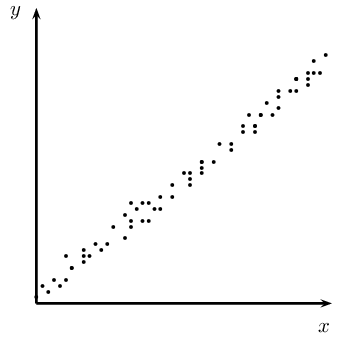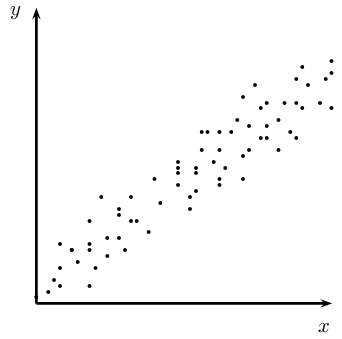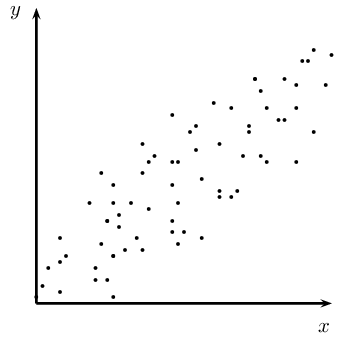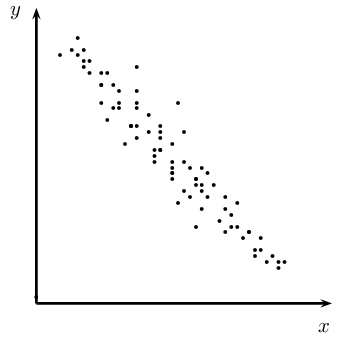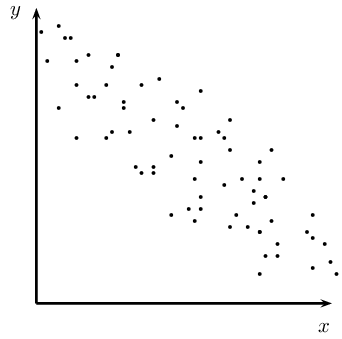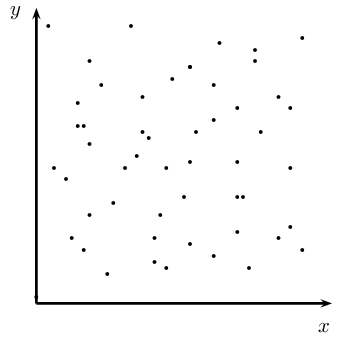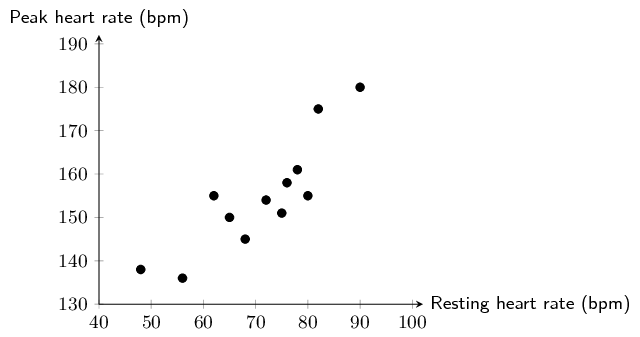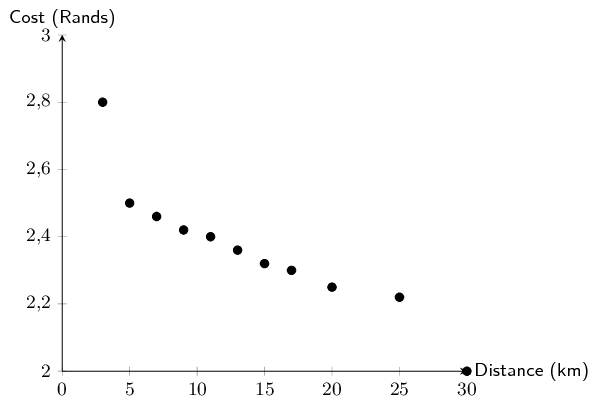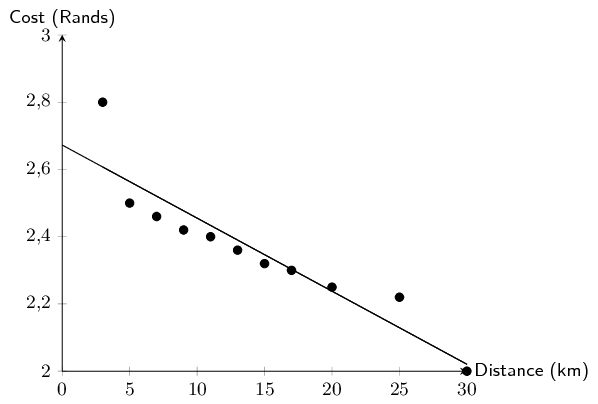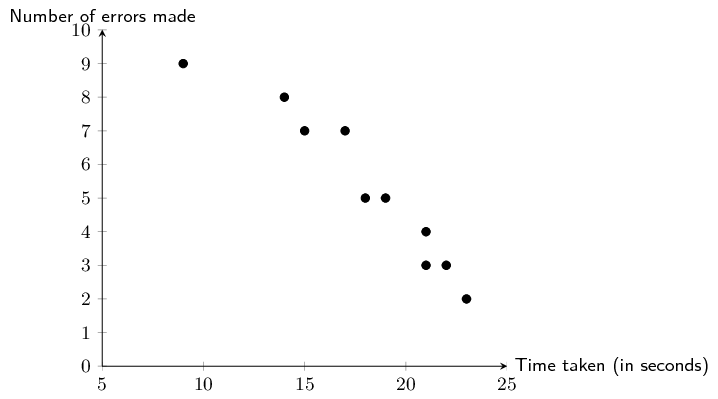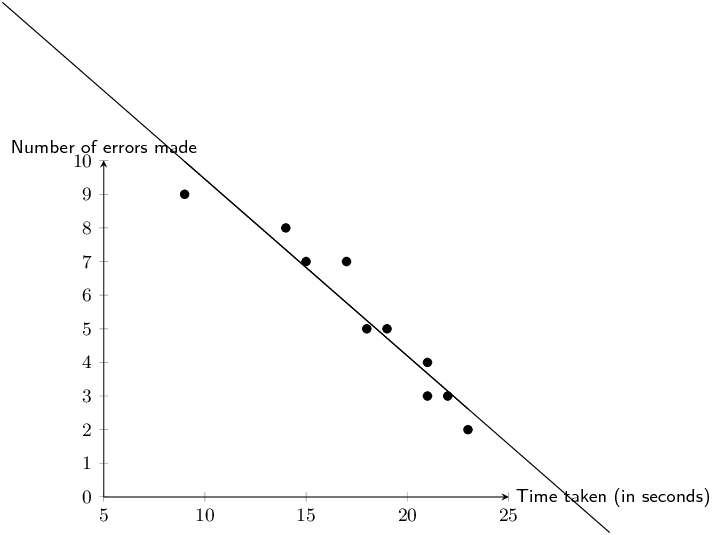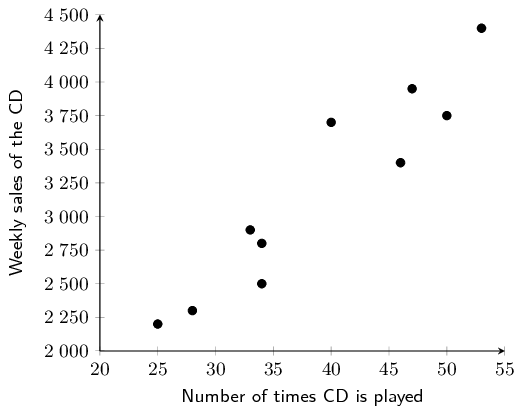| \(x\) | \(\text{5}\) | \(\text{8}\) | \(\text{13}\) | \(\text{10}\) | \(\text{14}\) | \(\text{15}\) | \(\text{17}\) | \(\text{12}\) | \(\text{18}\) | \(\text{13}\) |
| \(y\) | \(\text{5}\) | \(\text{8}\) | \(\text{3}\) | \(\text{8}\) | \(\text{7}\) | \(\text{5}\) | \(\text{3}\) | \(-\text{1}\) | \(\text{4}\) | \(-\text{1}\) |
|
\(x\) |
\(y\) |
\(xy\) |
\({x}^{2}\) |
\({x-\bar{x}}^{2}\) |
\({y-\bar{y}}^{2}\) |
|
\(\text{5}\) |
\(\text{5}\) |
\(\text{25}\) |
\(\text{25}\) |
\(\text{56,25}\) |
\(\text{0,81}\) |
|
\(\text{8}\) |
\(\text{8}\) |
\(\text{64}\) |
\(\text{64}\) |
\(\text{20,25}\) |
\(\text{15,21}\) |
|
\(\text{13}\) |
\(\text{3}\) |
\(\text{39}\) |
\(\text{169}\) |
\(\text{0,25}\) |
\(\text{1,21}\) |
|
\(\text{10}\) |
\(\text{8}\) |
\(\text{80}\) |
\(\text{100}\) |
\(\text{6,25}\) |
\(\text{15,21}\) |
|
\(\text{14}\) |
\(\text{7}\) |
\(\text{98}\) |
\(\text{196}\) |
\(\text{2,25}\) |
\(\text{8,41}\) |
|
\(\text{15}\) |
\(\text{5}\) |
\(\text{75}\) |
\(\text{225}\) |
\(\text{6,25}\) |
\(\text{0,81}\) |
|
\(\text{17}\) |
\(\text{3}\) |
\(\text{51}\) |
\(\text{289}\) |
\(\text{20,25}\) |
\(\text{1,21}\) |
|
\(\text{12}\) |
\(-\text{1}\) |
\(-\text{12}\) |
\(\text{144}\) |
\(\text{0,25}\) |
\(\text{26,01}\) |
|
\(\text{18}\) |
\(\text{4}\) |
\(\text{72}\) |
\(\text{324}\) |
\(\text{30,25}\) |
\(\text{0,01}\) |
|
\(\text{13}\) |
\(-\text{1}\) |
\(-\text{13}\) |
\(\text{169}\) |
\(\text{0,25}\) |
\(\text{26,01}\) |
| \(\sum=\text{125}\) | \(\sum=\text{41}\) | \(\sum=\text{479}\) | \(\sum=\text{1 705}\) | \(\sum=\text{142,5}\) | \(\sum=\text{94,9}\) |
Therefore, the correlation between \(x\) and \(y\) is negative but weak.

